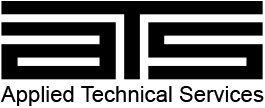- Home
- Services/IndustriesServicesindustries
- About Us
- LocationsStatesAccordion ContentAccordion ContentAccordion ContentAccordion Content
- Job Openings
- Quick Links
- ATS Family

Determining VOC Content in Car Interiors with GMW 15634 Testing
To best serve our clients in the automotive manufacturing industry, Applied Technical Services performs GMW 15634 testing. This standard uses dynamic thermodesorption to determine the volatile organic compound (VOC) content of sample materials to be used in car interiors. By testing those materials according to GMW 15634, ATS can help automotive OEMs comply with industry standards and regulations.
How GMW 15634 Testing Works
Our chemical analysis lab regularly performs VOC analysis through thermodesorption to both GMW 15634 and related standards, such as VDA 278. Both VDA 278 and GMW 15634 testing utilize our gas chromatograph / mass spectrometer (GC/MS) coupled with a sensitive Markes International thermal desorption (TD) unit.
The TD unit heats the analytes to a level that causes them to off-gas; it then collects the escaping VOCs and sends them to the GC/MS. This GC/MS separates the compounds, identifies them by comparing against a vast library of reference materials, and measures their mass down to their parts-per-billion (ppb). The TD-GC/MS process gives a thorough analysis of VOC content for consumer safety, quality assurance, and standard compliance purposes.
Our VOC Analysis Equipment
Our Markes TD unit has certain features, like a direct column connection with the GC/MS, that alleviate much of the uncertainty that was once treated as inherent to TD-GC/MS as a test method. Furthermore, its 100-place autosampler enables our lab to take on large projects.
Standards and Regulations
There are various regulations regarding VOC content. In the United States, for instance, the EPA regulates the maximum volume of VOCs that can be present in consumer products. Korea, Japan, China, and Russia each specifically regulate the level of VOCs that can be present in auto interiors.
Beyond the legal regulations, however, the automotive industry itself has adopted stringent standards on VOC content in interior materials. This push toward safer interior materials has encouraged automakers to develop their own approved methods of testing for VOCs. Whether observing government regulations or industry standards, clients can take advantage of ATS’ GMW 15634 testing services to help ensure product compliance.
ATS and VOC Testing
Since our founding in 1967, ATS has consistently delivered testing, inspection, and engineering consulting services of the highest caliber. Over the course of our 50+ years in business, we have grown to serve clients from many countries around the world.
While the rest of our VOC testing capabilities can benefit businesses operating in various fields – such as aerospace, chemical, consumer products, legal, manufacturing, and pharmaceutical – we perform GMW 15634 testing for the exclusive benefit of clients in the automotive industry.
About Our Chemistry Labs
Staffed with capable experts and equipped with highly sensitive analysis tools, ATS’ chemistry lab produces clear and accurate findings within quick turnaround windows. We accomplish this by promoting an internal culture dedicated to continually improving the customer experience.
Prioritizing quality in our testing methods, and responsiveness in our customer service ensures ATS is providing the positive experience that keeps our clients coming back whenever they need testing services.
ATS' Quality Assurance Program
Our quality management system is ISO 9001 registered, meaning that it has been affirmed by a third-party auditor to follow the internationally recognized standard for quality assurance programs. ATS makes this effort to maintain its reputation as one of the most trusted chemical analysis laboratories in the U.S.
If your company needs to confirm that materials used in your product comply with regulations and standards on VOC content, contact ATS for GMW 15634 testing today. We take a closer look!

Request Form
"*" indicates required fields
